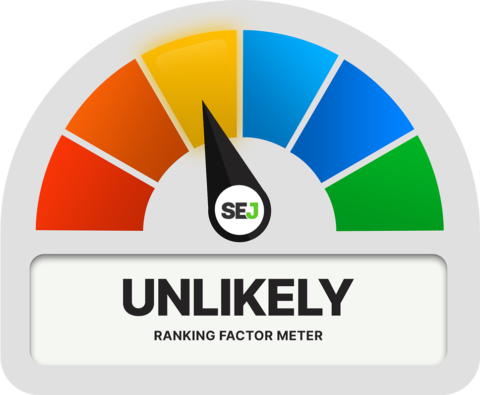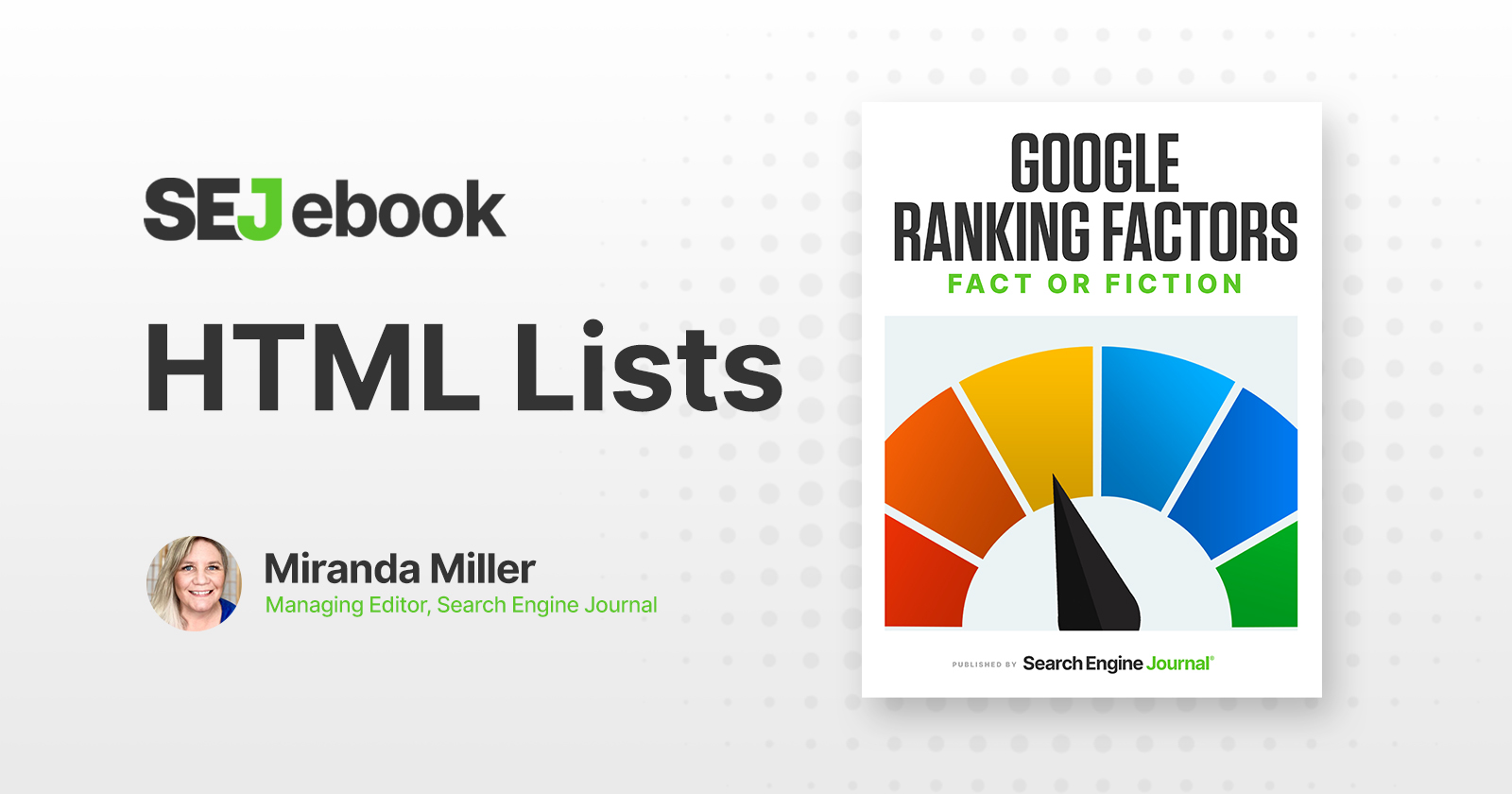Ordered and unordered lists are commonly used in web content to present related items, step-by-step instructions, etc. in an organized way.
Using the <ul> element with <li> child elements creates an unordered list that is typically displayed as a bullet list. The <ol> element and <li> children display a numbered list.
Lists can help you organize the text and numerical information on your webpage.
But can they help you rank higher in Google Search results?
The Claim: Ordered Or Unordered HTML Lists As A Ranking Factor
In order for HTML lists to be a direct ranking factor, adding them to your page and how you use them would have to be weighted within the Google search ranking algorithm.
Advertisement
Continue Reading Below
We know that some HTML elements are, such as heading tags. So what about lists?
That would mean that adding this:
<ul> <li>Berries</li> <li>Whipped cream <ul> <li>Heavy cream</li> <li>Sugar</li> </ul> </li> </ul>
To make this appear:

…would help you rank higher for berries and whipped cream – and, to an arguably lesser extent, heavy cream and sugar – in Google results.
Advertisement
Continue Reading Below
The Evidence For HTML Lists As A Ranking Factor
A 2010 Google patent analyzed by Bill Slawski shortly after its release indicates that (at least, at that time) Google used HTML markup for both unordered and ordered lists in its evaluation of a webpage.
Specifically, the method described in the patent helped the algorithm determine the semantic relationship between words, in its pursuit of understanding the page’s topical relevance. Slawski wrote:
“One part of the process behind this approach involves a search engine analyzing the HTML structures on a page, looking for elements such as titles and headings on a page, unordered lists (<ul>) and ordered lists (<ol>), nested tables, divs, and line breaks (<br>) that might be used to layout a list of items on a page.”
These elements could indicate to Google how words and topics are related to one another, and how content in each section relates to the content around it.
Considering Google’s increasing interest in natural language and what we now know about its Knowledge Graph, it stands to reason that page elements that improve its semantic understanding of that content are used in the algorithm.
Lists can also help your content appear in featured snippets at the top of the organic results.
In answer to, “How can I mark my page as a featured snippet?” Google says,
“You can’t. Google systems determine whether a page would make a good featured snippet for a user’s search request, and if so, elevates it.”
Advertisement
Continue Reading Below
One of the things Google’s systems looks for and will display in coveted Position Zero snippets is listicle-type content.
So while you can’t specifically tell Google, “This is a featured snippet,” you can write and format your content in such a way that you may qualify for a featured snippet.
The Evidence Against HTML Lists As A Ranking Factor
On their own, lists are too easily manipulated to count for much within the ranking algorithm. How awesome would it be if you could just list the things you wanted to rank for and shoot to the top of the SERPs?
Advertisement
Continue Reading Below
(Not awesome at all. It would be spammy as hell.)
That’s why I think the real and only benefit content creators and SEO professionals need to focus on is the order and structure HTML lists bring to your page.
Lists give your readers a quick point of reference or step-by-step action to take. They highlight key pieces of information. They help you easily convey what’s most important. They help people who are skimming the page quickly locate takeaways.
As Roger Montti explained in a recent article:
“In my opinion and experience, the ordered or unordered list isn’t ranking because they’re ordered/unordered lists. They are ranking because the ideas contained in the content is coherent, organized, and well structured.”
Advertisement
Continue Reading Below
On its own, a list – whether ordered or underordered – doesn’t mean much to Google.
But when it becomes clear to Google that a subheading, original text backed by reputable and properly cited expert information, an ordered or unordered list, and perhaps a video or high-quality image are all working together – that’s where the magic happens.*
The list is just how the information is presented. It’s the quality, context, trustworthiness, and accuracy of that information that matters most.
*Just so we’re clear, there’s no actual magic – black, white, or otherwise.
Ordered Or Unordered HTML Lists As A Ranking Factor: Our Verdict

Google may use HTML lists as a search ranking signal. If so, it’s not nearly as strong a signal as it may have been when HTML, words on the page, and links were nearly all the algorithm had to go on.
Advertisement
Continue Reading Below
I think it’s used to help Google contextualize the information it’s evaluating as a whole, but the presence of a list (or lack thereof) isn’t going to move the needle for you in the organic SERPs.
What lists definitely can do is bring order to chaos and help simplify complex ideas.
They can help you earn a highly visible, expanded search result in a featured snippet.
And lists can improve the reader’s experience, which is an SEO win all day long.
Featured image: Paulo Bobita
